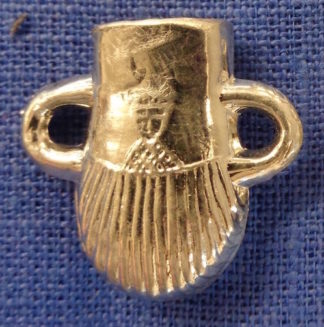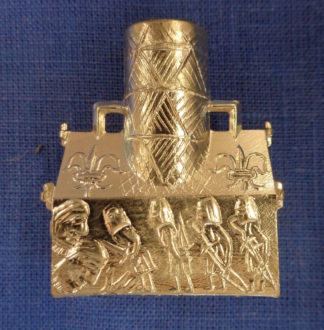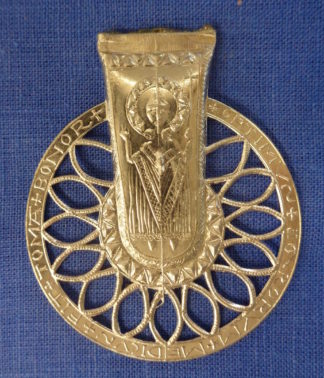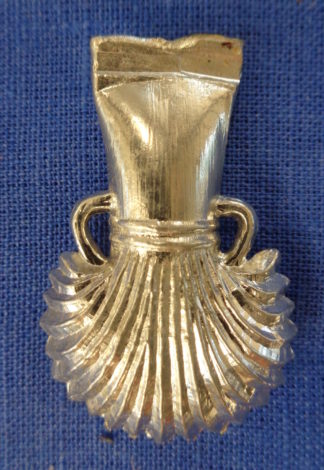Ampullae
Ampullae were commonly distributed at shrines which had sources of sacred or thaumaturgically active water. At Canterbury, for example, you could take away water from the well in which the body of Thomas Becket was washed after he was murdered, and there were dozens of designs of ampullae over the centuries the shrine was active. Pilgrims took the water home and saved it until its medicinal or religious qualities were called for – perhaps if a child was ill, the ampulla would be opened and the water from the well given to the patient.
We can supply ampullae closed, with water in them (from our faucet) or open if you prefer to supply the water and close it. To seal the ampulla, we wipe the inside of the opening with a heat-sensitive adhesive (we use a variety of resins), then heat the opening gently and squeeze it closed with a pliers. This usually keeps it tightly sealed, and we have a couple of samples we sealed years ago where you can shake them and still feel the water inside move. We apply the adhesive to the open ampullae before shipping.
Although most of our pilgrim signs (and other goods) are pewter, the ampullae are cast in pure tin.
Showing all 4 results
-

Thumbnail Ampulla
$6.00 Select options -

Reliquary Ampulla
$13.00 Select options -

Large Becket Ampulla
$15.00 Select options -

Ampulla
$9.00 Select options
Showing all 4 results
